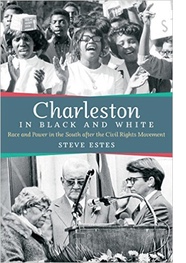Why We Shouldn’t Be Surprised the Walter Scott Case Ended in a Hung Jury
Walter Scott shooting from The Post and Courier on Vimeo.
With a hung jury in the criminal trial of former North Charleston police officer Michael Slager for the shooting of Walter Scott, the justice system once again failed to address police brutality and racial bias.
 From
the start, this case appeared destined to balance the scales of
justice. A cell phone video
clearly showed a white officer, Slager, shooting a fleeing, unarmed,
African American, Scott, in the back five times. The video was such
powerful evidence that it inspired four separate investigations by
state and federal authorities. This was not enough to convict
Slager even of manslaughter in his first trial. A historical
perspective may help us to understand why.
From
the start, this case appeared destined to balance the scales of
justice. A cell phone video
clearly showed a white officer, Slager, shooting a fleeing, unarmed,
African American, Scott, in the back five times. The video was such
powerful evidence that it inspired four separate investigations by
state and federal authorities. This was not enough to convict
Slager even of manslaughter in his first trial. A historical
perspective may help us to understand why.
Lowcountry police forces have rarely reflected the racial diversity of the region. From the colonial era through the Civil War, Charleston’s white police both fought crime and enforced slavery. For a brief period after the war during Reconstruction, the Charleston Police Department hired enough freedmen, so that African Americans made up almost half of the force. That experiment with biracial policing came to an end a few decades later. No black Charlestonians were hired for permanent positions on the police force in the Jim Crow era from 1896 to 1950.
At the same time that the city whitened its police force, the state of South Carolina began to disenfranchise black voters with its 1895 constitution that used “intelligence” as a requirement for registration. Such laws quickly led to all-white juries in South Carolina courts with predictable results. In 1898, a white mob lynched the black postmaster, Frazier Baker and his two-year-old daughter, Julia, in the small town of Lake City. Although two white witnesses testified against eleven members of the mob, the federal trial in Charleston ended in a hung jury. Prosecutors refused to retry the case. Frazier and Julia Baker eventually got a historical marker, but they never received justice.
Since the civil rights era, lowcountry police departments and courts have gone through a process of modernization and integration. A black police chief protected Charleston for more than two decades and black judges have meted out justice from the bench for even longer. But there is still a long way to go. Even though African Americans make up more than 47 percent of the North Charleston population, only eighteen percent of the city’s sworn officers are black. The Charleston County Sheriff’s Department has a similar racial imbalance among deputies (only 11 percent are black compared to a county population that is nearly 30 percent African American).
Hiring more black officers would help, but it would not end racial profiling and police brutality. The black police chief of Charleston from the 1980s to the 2000s told me in a 2006 oral history interview that he was unabashedly in favor of racial profiling, arguing that it was just good plain police work to utilize statistics suggested that African Americans were more likely to commit certain crimes. In terms of police brutality, the second officer on the scene of Walter Scott shooting was a black policeman, who did nothing to help Scott as he lay dying. Civil rights activists were torn about whether to press for charges against the black officer, who after all, had not pulled the trigger and was part of the solution to the problem of minority underrepresentation on the force.
If the North Charleston police shooting put local law enforcement under the microscope, the courts have come under scrutiny as well. With Dylann Roof going on trial in Charleston for the racially motivated Emanuel AME massacre, the local courts are in a national media spotlight. Perhaps this partially explains why it was difficult to find a more representative jury to try Michael Slager in the Walter Scott shooting. In a city that is nearly half African American, it seems almost inconceivable that the jury deciding Slager’s innocence or guilt contained one African American and eleven white residents. As with policing, more diverse juries will not guarantee racial justice, but they are certainly a step in the right direction. As in the Frazier lynching case over a century before, the racial imbalance on the jury in the Walter Scott case was likely a factor in producing a mistrial.
Southern history helps us to understand the Walter Scott case, but it does not fully explain it. A Cincinnati trial, involving a white police officer who shot an unarmed black man, ended in a mistrial just one month ago when the jury could not agree on a verdict. Police shootings across the country from San Francisco to New York have led to similar dead-ends. Many of the cases have never even made it to trial.
Despite the real differences between Black Lives Matter protests and All Lives Matter counter-protests, we should all be able to agree at this point that there is a problem with race and criminal justice in this country. This is a problem with deep southern roots, but it that has spread far beyond a single region or group. “There is no Negro problem,” President Lyndon Johnson said half a century ago, asking Congress for action on civil rights. “There is no Southern problem. There is no Northern problem. There is only an American problem.” It is a problem we all must face, or there will be far too many hung juries and far too little justice in our future.
